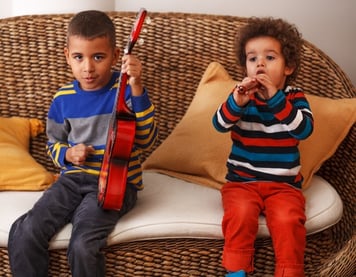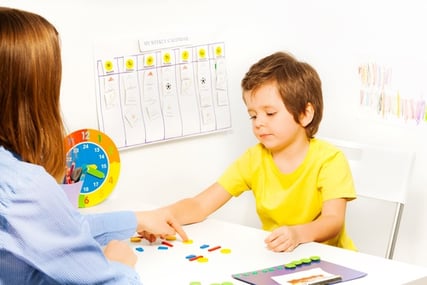How to Teach Your Kids Spanish (Even If You Only Know 'Hola')
There's no denying that a child's mind is like a sponge—any parent who's ever had an "oops!" moment in front of their little ones knows exactly what we're talking about.
Kids are unconsciously absorbing new information all the time. Their curiosity for the world around them grows each day. So it's no wonder that when it comes to learning a new language, studies show that kids have an easier go at it than adults.
 After all, think about the last thing you had to learn as an adult.
After all, think about the last thing you had to learn as an adult.
Chances are, you had to put a decent amount of effort into internalizing the information—maybe it was re-reading a chapter a couple of times, or diving into Youtube tutorials.
But with kids, learning new informations just flows more naturally. So when it comes to teaching them a new language (in our case, Spanish), don't knock yourself for not being a bilingual whiz.
In fact, there's a ton of ways to engage and educate your kids with Spanish without having to know a single word yourself.
Tip #1: Do Re Me Goes a Long Way
One of the best ways to teach your kids a new language is through song. Not only have studies shown that music help facilitate learning, but that it has a specifically positive effect on learning a new language.
According to the Children's Music Workshop, the evidence of how music enhances language development can be seen in the brain: "Recent studies have clearly indicated that musical training physically develops the part of the left side of the brain known to be involved with processing language, and can actually wire the brain's circuits in specific ways."

Try something easy to get your both you and your child's feet wet—Youtube has a ton of Disney playlists dubbed in Spanish, many of which include subtitles so you and your child can sing and read along. After all, who doesn't want to hear "Let it Go" just one more time? (p.s. in Spanish it's "Libre Soy").
Tip #2: Interactive Play is Key
If you caught our previous post on the benefits of play-based curriculums, then you already know all the good that play-based learning can do to not only help the lessons sink in but reinforce and encourage your child to be excited about learning.

Whether it's online games your kids can play from your mobile, tablet, or PC or in person games like Spanish Banangrams or Zingo, a vobularly based form of Bingo, your kids will be so busy having fun interacting with the game that they won't even realize they're learning along the way. In fact, it's what we do at our Oakland preschool. Grab the whole family and enjoy a game night with a bilingual twist.
Tip #3: Try an 'Español Only' Hour
All parents know how important repetition is when trying to impress something upon their little ones. Think how many times you have to remind your child to buckle up in the car or looking both ways before crossing the street.
The same rule applies to teaching them another language, especially when that language isn't the predominant one spoken at home.
To accomodate for that, try designating one hour a day to "Español" only. Whether they're asking for a snack (Apple = Manzana) or maybe to watch their favorite show (Computer = Computadora), the reinforcement will not only help your kids retain the information but may just help teach you a few new vocab words yourself!
No matter which method you choose, the most important lesson you can take away from teaching your child another language is that you're learning together as a family, creating memories that will last well beyond the second chorus of Libre Soy.
Have some tips about teaching little ones another language? Let us know in the comment section below! Or if you want to give your kids a bilingual education, check out our preschool in Oakland which has an English/Spanish play-based education.

